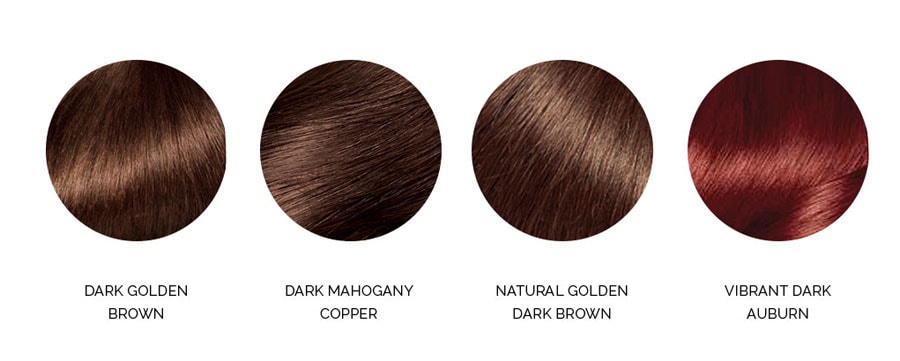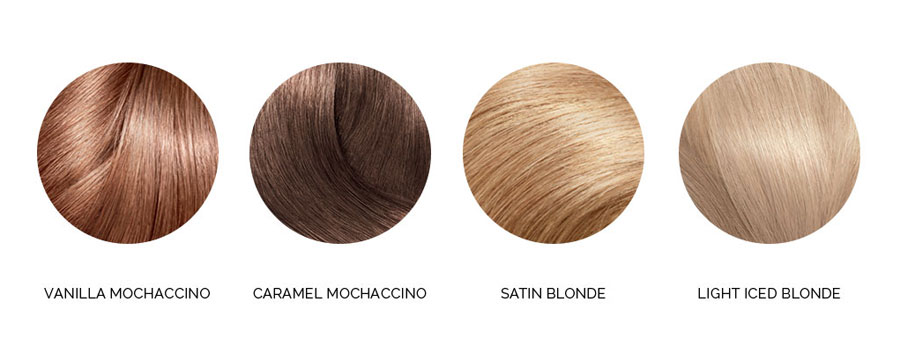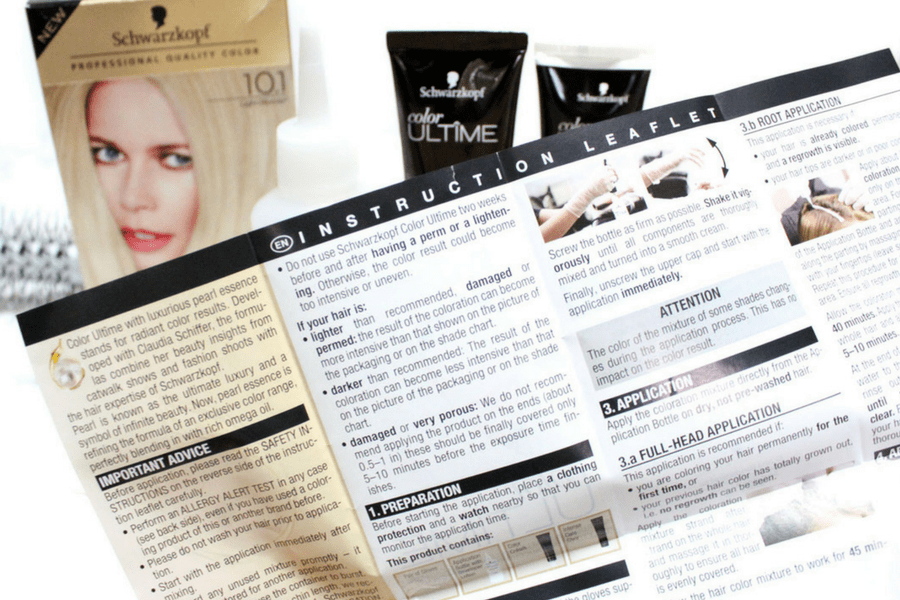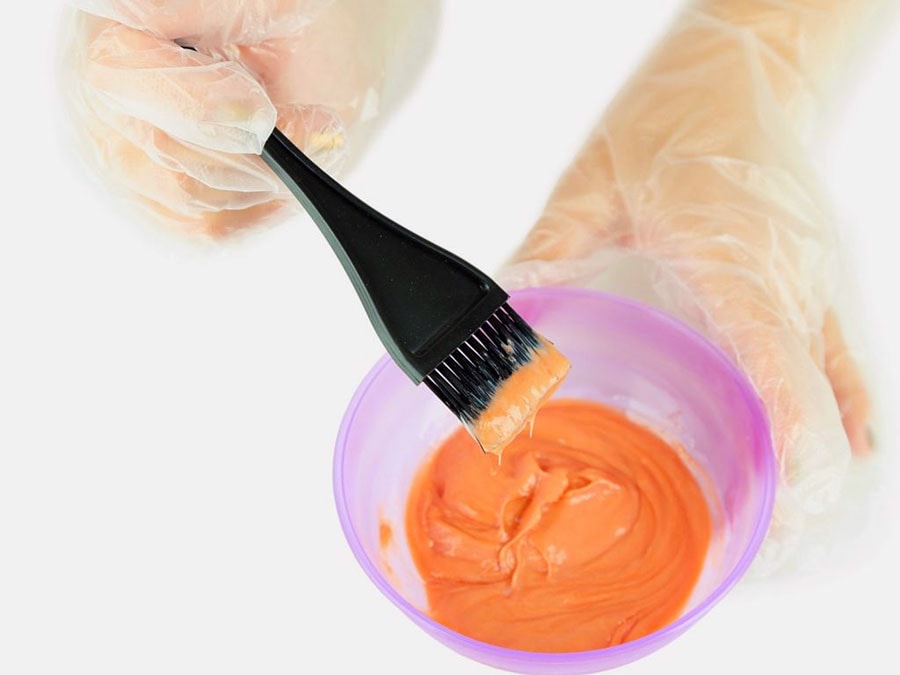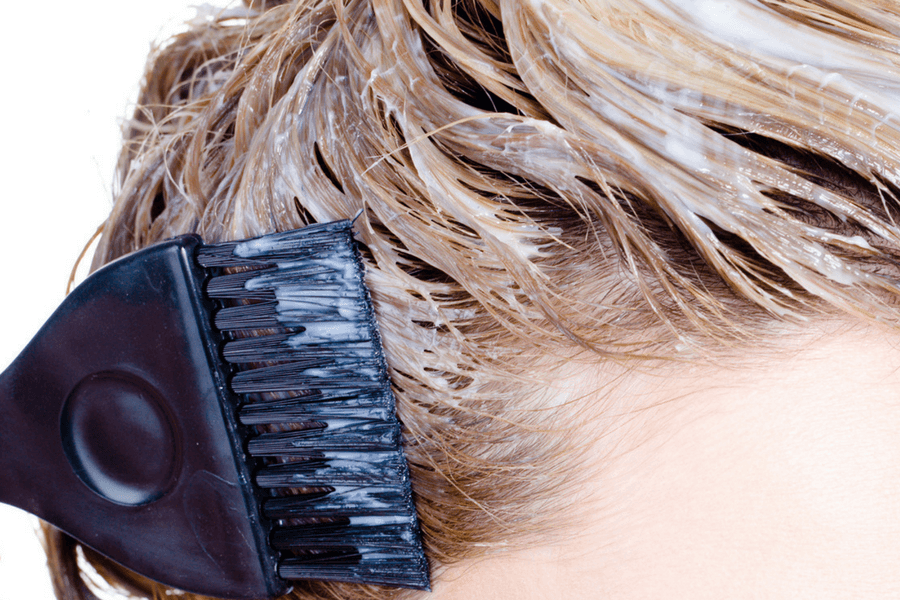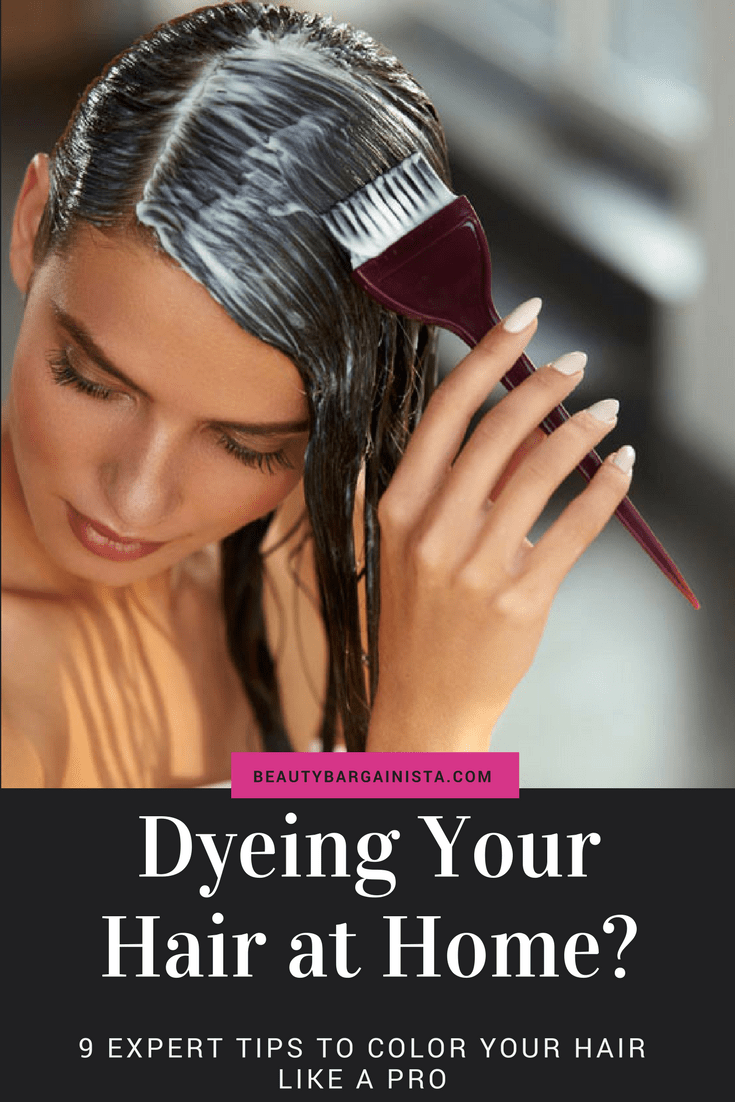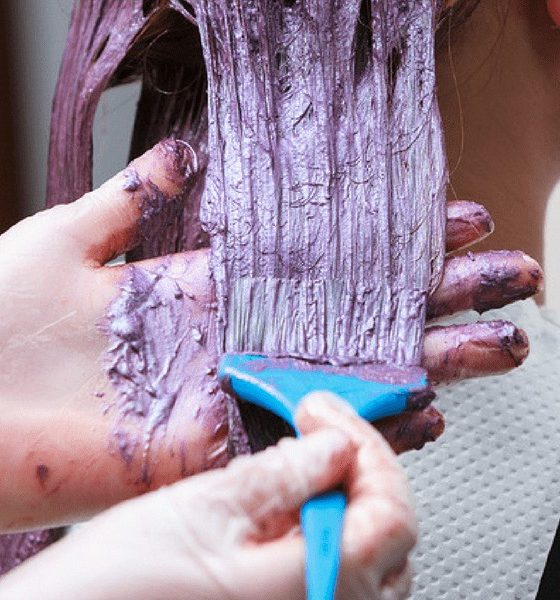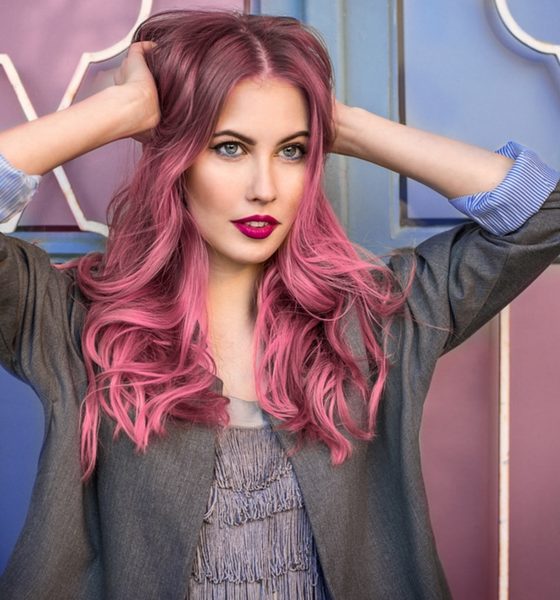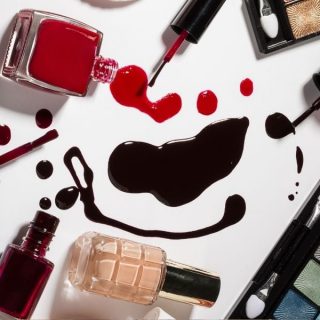Dyeing Hair for the First Time? 9 Expert Tips to Color Your Hair Like a Pro
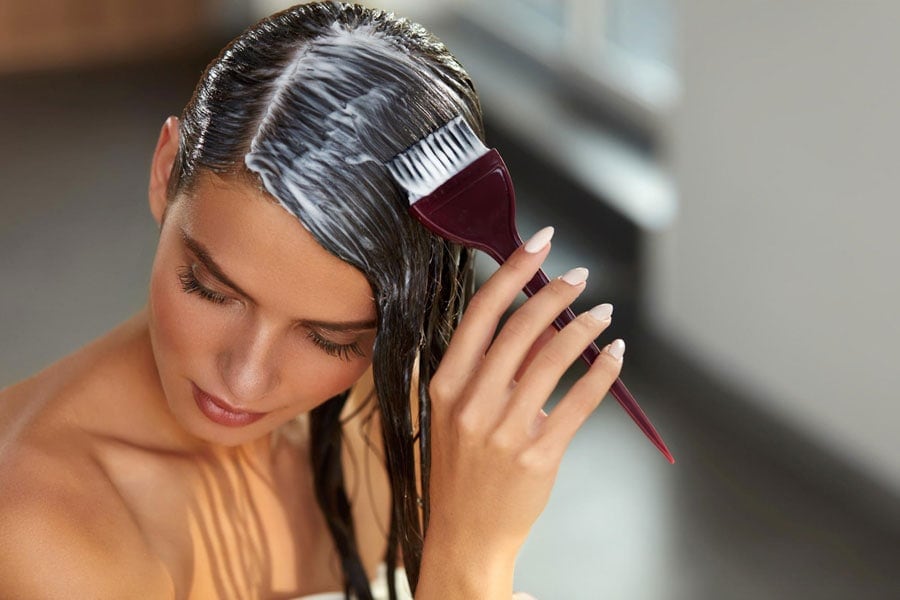
Strawberry blonde. Cocoa brown.
Fire-engine red.
You don’t have to be a celebrity to rock a high-wattage hair hue.
In fact, dyeing your hair at home is an inexpensive way to perform an extreme makeover on dull and dry strands.
Whether you are looking to cover grays, enhance your natural hair color, or take your basic hairstyle from drab to fab,
here's how to color your hair at home (without screwing up your strands) and get, pro-quality hair color to dye for!
JUMP TO:
Things You'll Need to Color Hair Like a Pro
- Hair coloring kit
- Deep conditioner for your hair type
- Plastic gloves
- Kitchen timer
- Petroleum jelly
- Large towel
- Plastic applicator bottle
- Butterfly clips
- Mixing bowl
- Hair coloring brushes or applicators
- Large plastic garbage bags
1 Select the right hair coloring process for your DIY dye job.
The four types of hair coloring hair-coloring processes are permanent, demi-permanent, semi-permanent and bleaching/lightening your hair. Each method differs by how long the color lasts and the way the color is deposited into your hair shaft.
- Permanent hair color uses peroxide and ammonia to alter your hair's natural pigments and colors the hair permanently.
- Demi-permanent hair coloring is gentler than the permanent process, does not lighten the hair and lasts for no more than 6 six weeks.
- The semi-permanent or temporary process is the mildest coloring method because it lasts from 5 to 7 five to seven shampoos.
- Bleaching is a permanent hair coloring process. The bleach reacts with the melanin in hair, removing the color in an irreversible chemical reaction.
Marie Claire magazine recommends you apply lowlights or highlights to your brown, black, black or red hair if you are not attempting to go more than three shades lighter than your original hue.
Cover gray strands with a permanent color or add shine to your blond or brunette strands with a gloss.
2 Grab the right hair hue for your skin tone
Before you visit the salon on or dye your hair at home, consider your natural skin tone before applying color or by trying an online hair color changer.
For blue or red undertones, apply cool tones like such as blonde, jet black, ruby, deep brown and honey-colored tones.
For women with yellow undertones, choose warm toned-color like toned-colors such as chestnut, cinnamon, golden brown or mahogany.
When in doubt, choose a hair hue that is no more than 1 or 2 one or two shades darker or lighter than your natural hair shade.
3 Avoid this mistake: Read the directions on the box
There’s nothing worse than attempting an at-home dye job without having the right tools or forgetting to prep the bathroom floor to prevent hair coloring splatters.
Before you apply your first drop of color, determine beforehand read how to use the product and gather all the necessary tools — old towel, gloves, timer and plastic clips — before you begin coloring hair.
4 Don't skip the strand test
Perform a patch test on a 2-inch strand of hair to determine how the coloring process reacts to your natural hair.
The patch test will keep you from selecting the wrong color or from a salon's expensive color-correcting process to cover any hair coloring mishaps.
5 Prep your hair coloring tools properly
Create your own home hair coloring station to save big bucks while you transform your tresses.
Try this trick: Gather everything you will need beforehand, so you don't over-process your hair while searching for misplaced hair coloring essentials.
Place the tools the pros use — for example plastic gloves, kitchen timer and a plastic applicator bottle in your bathroom to color hair properly
This necessary tool-prep step will stop you from over-processing your dry strands while you search for any misplaced brushes, gloves, mixing bowls or hair coloring hair-coloring wands.
6 Divide hair into sections
Image source
Separate hair into 4 to 6 sections, so you can apply hair color evenly to each section.
Keep hair divided with plastic butterfly clips. Because some dyes may irritate your skin, spread a dollop of petroleum jelly along your hairline before applying color.
To prevent any painful irritation of the scalp, avoid washing your hair one full day before coloring it.
Part your hair into four sections from the forehead to the nape, nape and from ear to ear. Keep hair divided with large butterfly clips or metal alligator clamps. Place the plastic gloves on your hands and drape a towel around your neck.
7 Pour the hair color into a mixing bowl
Image source
Use a large hair coloring hair-coloring brush to combine the product thoroughly. Dip the edge of the brush into the bowl and apply the product to one section of the hair.
Apply hair color along the roots beginning with the front section; wear plastic gloves for the entire dying process. Apply color from the roots to the ends. Repeat this process on the three remaining sections of your hair.
To ensure that you coat hair strands with color completely, paint the front and back of the hair from the roots to the tips.
8 Add color to the remaining four sections of hair
Pile hair on the top of your hair to complete the coloring process. Set a kitchen timer for the amount of time recommended on the box.
Once the timer rings, rinse and shampoo your hair to stop the hair coloring process.
9 Follow with a deep conditioner to help seal in your new color.
Voila! You’ve got a new hue for your old hair-do!
Best Dyeing Hair at Home Tips for Beginners
- If you want a more intense shade upgrade – like going from brunette to platinum blond — leave the tricky color upgrade to the pros.
- If you don’t want to lift hair color but only add shine to your strands, apply a semi-permanent dye instead of a permanent tint.
- Apply a deep conditioner suited to your hair type two to three days before you color your hair. The result? Strands that are hydrated help absorb color best and your hair will look and feel super-silky.
- The hair coloring process works best when the hair is dry and not brushed or washed. Expect the hair color to darken or lighten within one to two shade of the colors displayed on the box.
- To prevent hair color from staining your skin, coat your forehead and ears with petroleum jelly before applying your new hue.
- Place a large plastic garbage bag on your bathroom floor to catch any drips of hair color.
- Some hair coloring products have color consultants on call to help you with coloring snafus or questions. If possible, call the toll-free number provided on the back of the at-home product's box for help and advice.
- Apply hair color a few days after shampooing to allow the natural oils to return to the hair shaft
 Additional Tips to Help You Dye Your Hair at Home
Additional Tips to Help You Dye Your Hair at Home
- 25Pinterest
- 25shares


